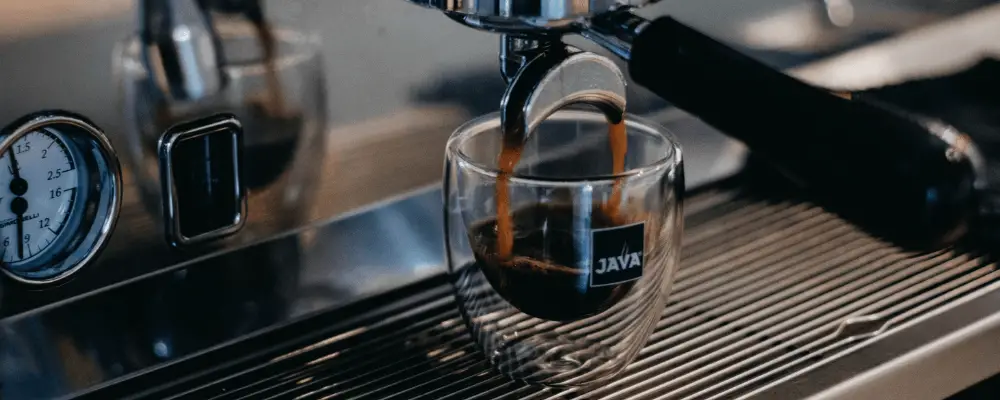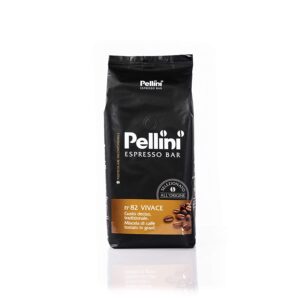
Have you tried all the different types of espresso yet? There are quite a few to explore, and new variations seem to be popping up to this day. Here is a couple you need to try the next time you’re at a coffee shop, a long shot, and a ristretto.
Let’s compare a Long Shot vs a Ristretto espresso. A long shot is a name given to a coffee where espresso is pulled directly into a glass of warm water. A ristretto is a concentrated dose of espresso made with half the amount of water used to make a regular shot.
The main variable between these two drinks is water. A long shot is made with extra water to ease the bold flavor of espresso, while a ristretto is brewed with less water than regular to amplify its natural taste.
Since one is diluted and the other so concentrated, they are ideal drinks to try to find your tolerance for the flavor of espresso.
Let’s take a deeper look into the similarities and differences between the two in our head-to-head comparison of a long shot vs. a ristretto.
What Is a Ristretto Coffee?
Ristretto is of Italian origin, and its name translates to “restricted”. In the instance of coffee, it refers to a short shot of espresso (hence the “restricted” name translation). In simple terms, it means the barista only pulls the first portion of a full-length espresso shot.
It’s most certainly more about quality rather than quantity; true avid ristretto drinkers will know this. Additionally, this coffee is always served with a glass of water.
How to Make a Perfect Ristretto?
After preparing your cup of choice, the first step is to of course grind the coffee beans, ensuring that it’s at the right grind level. (Most coffee machines should be preset to the correct grind level, or else the user manual to change this should be easily consultable).
The amount of grind to be using should be between 16 to 18.5 grams, depending again on the usual dosage for the espresso machine. Level the grind evenly and cautiously within the portafilter, then tamp it down gently.
The next step is to insert the portafilter into the espresso machine and pull the coffee shot.
It is expected that this coffee shot will have a much slower flow rate than a typical espresso shot. Ensure that the shot is timed; 30 milliliters of liquid should come out in between 25 to 30 seconds.
How Does a Ristretto Coffee Taste?
Now that the ristretto coffee has been made, tasting it is the next important step and this coffee certainly has a different flavor to the other black coffees.
The taste of a ristretto coffee is often described as aromatic, with hints of floral coffee notes. Since it’s made with less hot water than a regular shot of espresso, the finely ground coffee beans produce a concentrated flavor with a sweeter taste.
A shorter extraction time avoids making the coffee taste bitter.
What Is a Long Shot Espresso?
In simple terms, a long shot espresso has a shot of coffee pulled overtop a cup of hot water.
History-wise, for the long shot, it comes from the Caffe Americano style of coffee, but it was the Italians who perfected it.
Beforehand, the Italians only made espresso and a cappuccino. So, when the Americans, who were avid black coffee drinkers, would go to Italy they naturally asked for big cups of black coffee.
Unfamiliar to Italian baristas, who were of course only used to making small espressos, they tried to please the American tourists by adapting their espressos and made a large (or “long”) cup of black coffee.
The Americans found that this was too strong, so the Italians reduced the coffee’s strength by drawing one espresso shot into a smaller cup that was pre-filled with hot water.

How to Make a Long Shot Espresso?
Firstly, fill a cup with eighty percent hot water.
Generally, a long shot espresso is consumed from a small “tulip” shaped cup as the cup should be 150ml to 200ml in volume, but any small to regular cup is fine.
Next, grind the coffee beans into a portafilter, and gently tamp the grinds after leveling them off evenly.
Lastly, insert the portafilter into the coffee machine, and then pull the coffee shot over the prepared cup of hot water.
Although, this is one of two possible methods to prepare a long shot espresso; with this one being practiced more than the other. The other method suggests pulling the coffee shot first into the cup, and then add the eighty percent hot water on top.
Many coffee experts and baristas would agree that the common practice is to in fact use the first method, though. This is because it is thought that this way produces a much sweeter black brew that holds the crema and avoids burning the flavors.
How Does a Long Shot Espresso Taste?
A long shot espresso can be served in many ways depending on a person’s diet requirements or taste preferences.
It can include a serving of any milk, dairy or non-dairy, cream, cold water, or just as it comes.
Taste-wise, a long shot has a strong coffee flavor. Since it’s eighty percent water the pronounced espresso flavors are dulled and muted, but the natural tones of the coffee beans are still evident thought the drink.
The flavor of a long shot can also be described as slightly bitterer than an average black cup of joe.
Long Shot Vs. Ristretto
The long shot and ristretto coffees have their differences in taste and methods of producing them, but they do have one similarity, although the long shot has more water.
Both coffees use the same amount of coffee grounds. Although this is the case, the added hot water to the long shot makes it a full mug of coffee, whereas the ristretto is just a small shot.
Depending on taste preference, the options are there for a slightly bitter black coffee or a more aromatic taste for a change.
I’ve always seen coffee as a way of bringing people together. Everywhere I go people seem to enjoy a fresh cup of coffee and that’s what drives my passion. There’s always a new brew to master, and there’s always a new face to enjoy it with. Hitch a ride with me on a coffee-fueled adventure to find a perfect cup.


